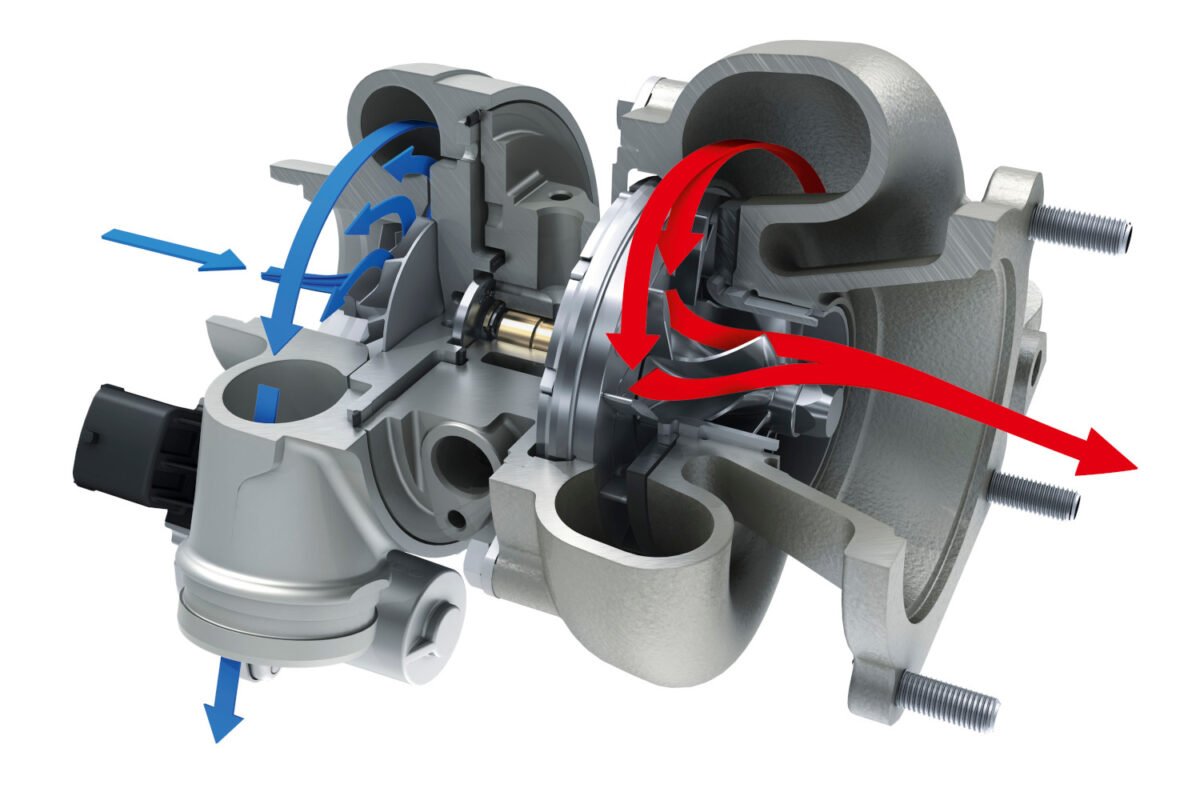
What is the VTG Turbo?
Presented in 2006, Porsche 911 Turbo was the world’s first car to feature a turbocharged petrol engine with VTG technology. But what is the VTG turbo technology?
What is the VTG Turbo?
The letters VTG is the acronym for variable turbine geometry. The core features of the VTG system are the variable turbine blades guiding the flow of exhaust gas from the engine in exactly the direction required on to the turbine wheel of the exhaust gas turbocharger.
This technology makes it possible to deliver very good response and high torque at low engine speeds, and superior output and high performance at high speeds. Also the high level of torque is maintained consistently throughout a much wider speed range. So VTG Turbo makes it possible to enjoy the benefits of a small and large exhaust gas turbocharger all in one.
How Variable Turbine Geometry Works
Variable turbine geometry uses guide blades to simulate the cross-section of a turbocharger always optimised in size. At low engine speeds, the blades angle to form small air-flow openings. The exhaust gas flowing through the smaller cross-section accelerates accordingly and hit the turbine wheel with a high energy level. This blade angle is maintained until the system has built up the required boost pressure.
As exhaust gas flow continues to increase as a function of higher engine speed, the VTG guide blades open up and adjust the boost pressure accordingly. The electronic management and the electrically driven control mechanism are set up to give the blades an adjustment period from “open” to “closed” of approximately 100 milliseconds. The variable turbine geometry of the turbocharger can handle even the highest possible exhaust gas flow, so there is no need for a bypass valve.
World’s First
Before Porsche presented the 911 turbo, the variable turbine geometry had been used only with diesel engines because of the thermal reasons. For example, exhaust gas temperatures at the point leading into the turbine on a diesel engine are between 700 and 800 °C. The exhaust gas on Porsche’s turbocharged power units, has a temperature of 1000 °C.
Porsche solved this problem in close cooperation with Borg Warner Turbo Systems by using high temperature-resistant materials from space technology wherever required. Porsche’s engineers also developed a two-stage oil cooling system including a follow-up pump, as well as a water cooling system for the bearing housing, to help reduce the high temperatures.

Image by Porsche
You may also like
Latest Additions
- Porsche 911 (991.2) Option Codes (MY2017)
 Here are the Porsche 911 (991.2) option codes with descriptions from model year 2017. Options list may vary depending on the year/country
Here are the Porsche 911 (991.2) option codes with descriptions from model year 2017. Options list may vary depending on the year/country - Race Car: Porsche 935 (2019)
 The limited-edition 2019 Porsche 935 clubsport racer pays tribute to the legendary Porsche 935/78 Le Mans race car
The limited-edition 2019 Porsche 935 clubsport racer pays tribute to the legendary Porsche 935/78 Le Mans race car - Michelin Pilot Sport S 5 – Great for Wet Conditions
 Track tyres are usually designed to provide optimal grip in dry conditions. For those drivers who don’t mind a little rain, the Michelin Pilot Sport S 5 is a perfect option for prolonging the track-day season. Michelin Pilot Sport S 5 Jointly developed by Porsche and Michelin, the Michelin Pilot Sport S 5 is a
Track tyres are usually designed to provide optimal grip in dry conditions. For those drivers who don’t mind a little rain, the Michelin Pilot Sport S 5 is a perfect option for prolonging the track-day season. Michelin Pilot Sport S 5 Jointly developed by Porsche and Michelin, the Michelin Pilot Sport S 5 is a - What is the 2023 Porsche 911 Sport Classic?
 The 2023 Porsche 911 Sport Classic is a limited-edition model with distinctive design cues inspired by iconic 911 models from history
The 2023 Porsche 911 Sport Classic is a limited-edition model with distinctive design cues inspired by iconic 911 models from history - Guards Red 2025 Porsche 911 GT3
 Red is a sports car color. But is red a GT3 color? You might say "yes" after checking these images of a Guards Red 2025 Porsche 911 GT3
Red is a sports car color. But is red a GT3 color? You might say "yes" after checking these images of a Guards Red 2025 Porsche 911 GT3 - 2021 Porsche 911 GT3 Cup (992.1) Specs
 Here are the technical specifications of the 2021 Porsche 911 GT3 Cup (992.1) racing car based on the 992.1 generation of the Porsche 911
Here are the technical specifications of the 2021 Porsche 911 GT3 Cup (992.1) racing car based on the 992.1 generation of the Porsche 911 - Race Car: Porsche 911 GT3 RSR (2011)
 For the 2011 season, Porsche unveiled a new version of the Porsche 911 GT3 RSR with extensive modifications
For the 2011 season, Porsche unveiled a new version of the Porsche 911 GT3 RSR with extensive modifications - 2025 Porsche 911 Carrera Cabriolet PDK (992.2) Specs
 Here are the technical specifications of the 2025 Porsche 911 Carrera Cabriolet (992.2) with the PDK transmission
Here are the technical specifications of the 2025 Porsche 911 Carrera Cabriolet (992.2) with the PDK transmission - 2025 Porsche 911 Carrera Cabriolet – 10 Fast Facts
 The 992.2 generation Porsche 911 Carrera Cabriolet was introduced for the 2025 model year. Here are 10 fast facts about the 2025 Porsche 911 Carrera Cabriolet
The 992.2 generation Porsche 911 Carrera Cabriolet was introduced for the 2025 model year. Here are 10 fast facts about the 2025 Porsche 911 Carrera Cabriolet - Porsche Design Chronograph 911 Turbo S (2025)
 Inspired by the new 2026 Porsche 911 Turbo S, Porsche Design has released a new Chronograph 911 Turbo S watch
Inspired by the new 2026 Porsche 911 Turbo S, Porsche Design has released a new Chronograph 911 Turbo S watch
